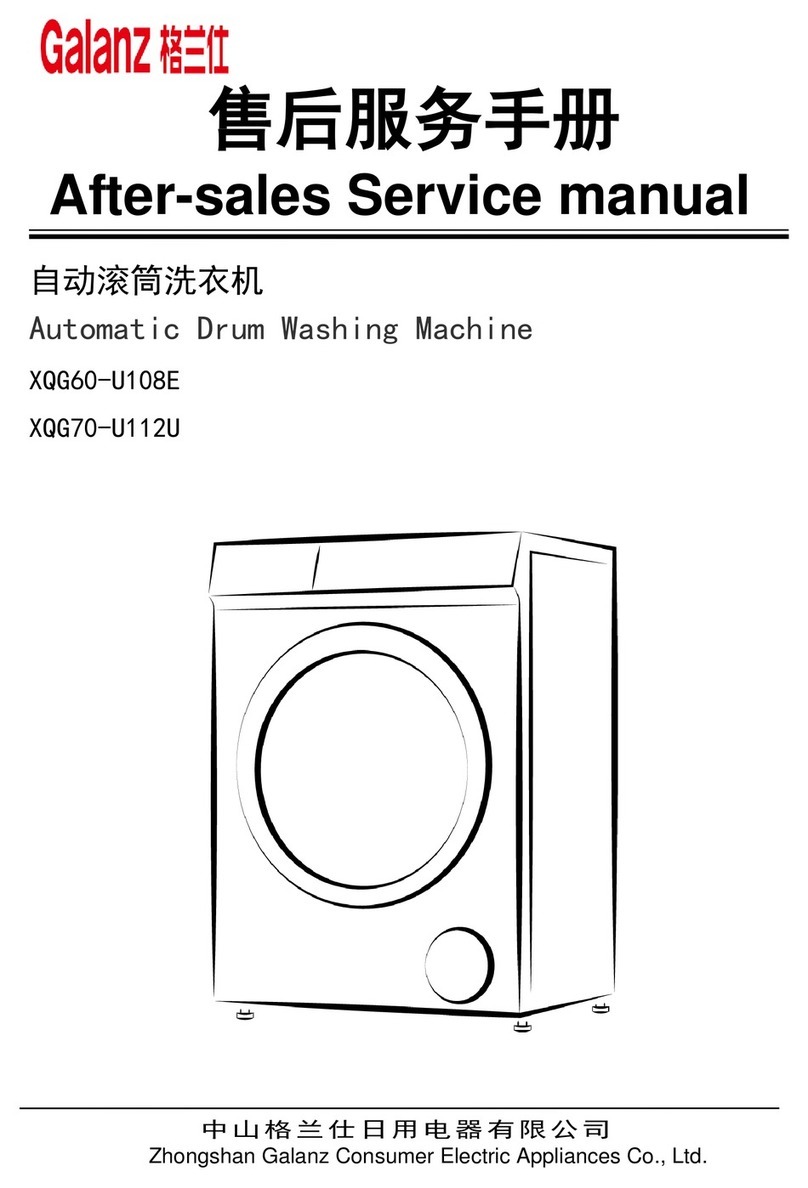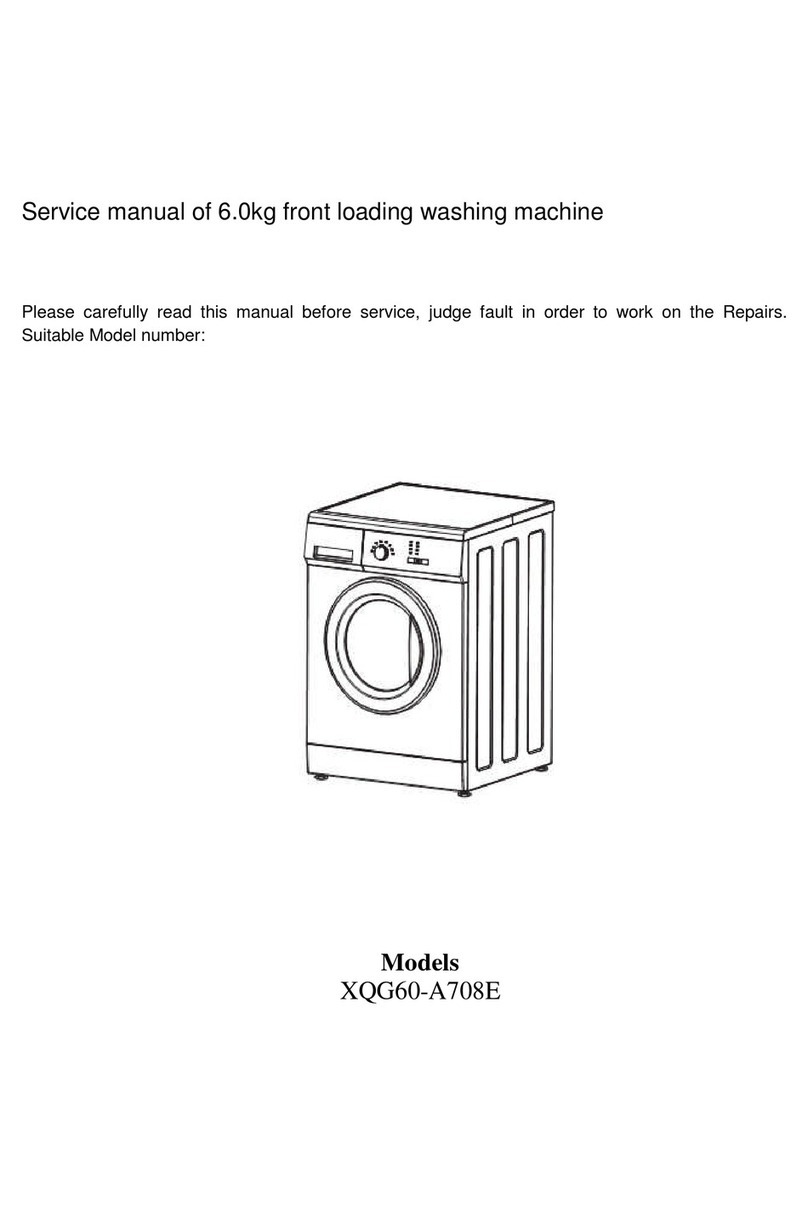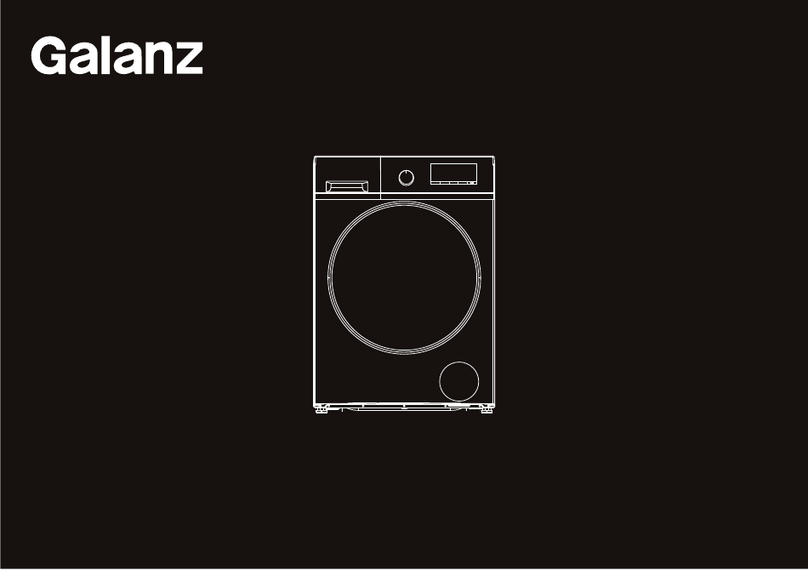2
Cảnh báo
Đọc và hiểu kỹhướng dẫn an toàn này trước khi sửdụng. Các mục được
chỉra ởđây là các biện pháp phòng ngừa an toàn rất quan trọng, phải
được tuân theo. Chúng tôi không chịu trách nhiệm cho các thiệt hại do
không tuân thủcác hướng dẫn cảnh báo và an toàn hoặc do sửdụng hoặc
vận hành không chính xác. Trẻem từ8 tuổi trởlên có thểsửdụng thiết
bịnày và những người bịgiảm khảnăng thể chất, giác quan hoặc tinh
thần hoặc thiếu kinh nghiệm và kiến thức nếu họđược giám sát hoặc
hướng dẫn liên quan đến việc sửdụng thiết bịmột cách an toàn và hiểu
mối nguy hiểm liên quan. Trẻem không được chơi với thiết bị. Trẻem
không được làm vệsinh và bảo trì máy nếu không có sựgiám sát. Trẻem
dưới 3 tuổi nên tránh xa trừkhi có người lớn giám sát.
Kỹthuật an toàn
•Trước khi lắp đặt máy giặt, hãy kiểm tra xem có bất kỳhư hỏng nào
bên ngoài máy không. Không lắp đặt hoặc sửdụng máy giặt bịhỏng.
•Trước khi cắm điện máy giặt, đảm bảo rằng dữliệu nguồn điện ghi trên
tem dữliệu (điện áp và dòng điện) phù hợp với nguồn điện. Nếu có
nghi ngờ, hãy tham khảo ý kiến một thợđiện có trình độ.
•An toàn điện của máy giặt này chỉcó thểđược đảm bảo khi có một hệ
thống tiếp đất hiệu quảtuân thủcác quy định an toàn địa phương quốc
gia và hiện hành. Điều quan trọng nhất là yêu cầu an toàn cơ bản này
phải có và được kiểm tra thường xuyên, khi có nghi ngờ, hệthống dây
điện trong gia đình cần được kiểm tra bởi một thợđiện có trình độ.
Nhà sản xuất không thểchịu trách nhiệm vềhậu quảcủa hệthống tiếp
đất không đầy đủ.
•Không kết nối máy giặt với nguồn điện chính qua dây dẫn (ổcắm) mở
rộng. Dây dẫn (ổcắm) mởrộng không đảm bảo an toàn cần thiết của
thiết bị.
•Việc tựsửa chữa máy có thểdẫn đến những nguy hiểm không lường
trước cho người dùng, nhà sản xuất không chịu trách nhiệm pháp lý
khi người dùng tựsửa chữa máy. Việc sửa chữa chỉnên được thực hiện
bởi một kỹthuật viên dịch vụđã được phê duyệt. Đảm bảo ngắt dòng
điện cung cấp cho máy cho đến khi công việc bảo trì hoặc sửa chữa
được thực hiện xong.





































